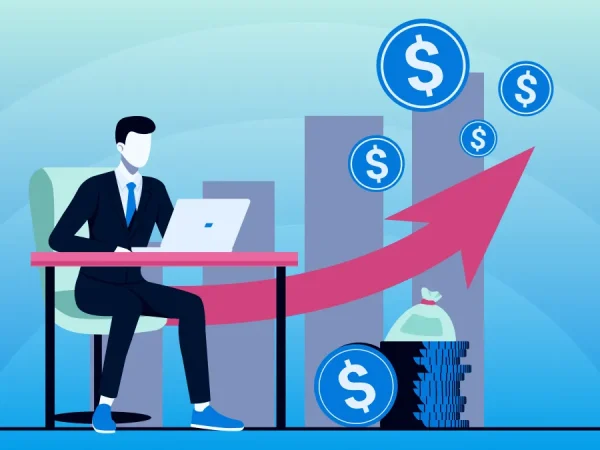The Ultimate Guide to Building an Emergency Fund: Why It’s Crucial and How to Start

In today’s uncertain world, having a solid financial foundation is more important than ever. One crucial aspect of financial security is building an emergency fund. An emergency fund acts as a safety net, providing you with peace of mind and protection against unexpected expenses. This comprehensive guide will delve into the importance of an emergency fund and outline practical steps to help you get started.
Why is an Emergency Fund Crucial?
An emergency fund is a pool of money set aside to cover unforeseen expenses or financial emergencies. Here’s why having an emergency fund is crucial:
Financial Security:
Life is full of surprises, such as medical emergencies, sudden unemployment, or major car repairs. An emergency fund serves as a financial cushion, allowing you to navigate these situations without going into debt or sacrificing your long-term financial goals.
Peace of Mind:
Knowing that you have a financial safety net in place can alleviate stress and anxiety. An emergency fund provides a sense of security, enabling you to handle unexpected events with confidence.
Avoiding Debt:
Without an emergency fund, many people resort to borrowing money when faced with an unforeseen expense. Relying on credit cards or loans can lead to high-interest charges and long-term debt. Having cash readily available in an emergency fund helps you avoid falling into a debt cycle.
How to Start Building an Emergency Fund
Now that you understand the importance of an emergency fund, let’s explore the steps to get started:
1. Set a Realistic Goal
Begin by determining how much you want to save in your emergency fund. A common guideline is to aim for three to six months’ worth of living expenses. However, consider your personal circumstances and adjust the target accordingly. Evaluate your monthly expenses, including rent/mortgage, utilities, groceries, transportation, and insurance, to estimate a realistic goal.
2. Create a Budget
To build an emergency fund successfully, it’s essential to have a budget in place. Analyze your income and expenses to identify areas where you can cut back and allocate more towards savings. Create a monthly budget that prioritizes savings contributions towards your emergency fund.
3. Automate Savings
Make saving money a habit by automating regular contributions to your emergency fund. Set up an automatic transfer from your checking account to a dedicated savings account each month. Treating your emergency fund as a recurring bill ensures consistent progress towards your goal without relying on willpower alone.
4. Reduce Expenses and Increase Income
Look for ways to cut unnecessary expenses and boost your income. Consider renegotiating bills, downsizing your living arrangements, or finding additional sources of income through part-time work or freelancing. Direct the extra money towards your emergency fund to expedite its growth.
5. Minimize Lifestyle Inflation
As your income increases, it’s easy to fall into the trap of expanding your lifestyle and spending habits accordingly. Instead, channel a significant portion of any pay raises, bonuses, or windfalls directly into your emergency fund. This approach allows you to maintain a modest lifestyle while simultaneously building financial security.
6. Prioritize Debt Reduction
If you have outstanding debts, it’s crucial to address them while saving for your emergency fund. Prioritize high-interest debts, such as credit cards or payday loans, and create a repayment plan. By reducing debt, you free up additional funds to contribute towards your emergency savings.
7. Explore High-Yield Savings Accounts
While building your emergency fund, consider exploring high-yield savings accounts. These accounts offer higher interest rates than traditional savings accounts, allowing your savings to grow faster over time. Here’s what you need to know about high-yield savings accounts:
What are High-Yield Savings Accounts?
High-yield savings accounts are financial products offered by banks and credit unions that provide a higher interest rate compared to regular savings accounts. The interest rates on these accounts are variable and can be significantly higher than the national average. While traditional savings accounts typically offer interest rates of around 0.01% to 0.10%, high-yield savings accounts may offer rates upwards of 1% or even more.
Benefits of High-Yield Savings Accounts
Opting for a high-yield savings account can bring several benefits to your emergency fund strategy:
Higher Interest Earnings:
The primary advantage of a high-yield savings account is the opportunity to earn more interest on your savings. This can significantly accelerate the growth of your emergency fund over time.
Easy Access to Funds:
High-yield savings accounts provide liquidity and easy access to your money. Unlike long-term investment options, such as certificates of deposit (CDs), high-yield savings accounts allow you to withdraw your funds without penalties or restrictions.
Low Risk:
High-yield savings accounts are typically FDIC insured, which means your deposits are protected up to $250,000 per depositor, per institution. This assurance adds a layer of security to your emergency fund.
Considerations When Choosing a High-Yield Savings Account
When selecting a high-yield savings account, keep the following factors in mind:
Interest Rate:
Compare interest rates offered by different financial institutions. While higher rates are desirable, consider other factors such as fees and account features to get a complete picture.
Fees and Minimum Balance Requirements:
Some high-yield savings accounts may come with maintenance fees or minimum balance requirements. Take note of these charges and ensure they align with your savings goals and financial situation.
Account Accessibility:
Evaluate how easy it is to access your funds when needed. Check if the account allows online transfers, ATM withdrawals, or offers a debit card for convenient access.
Customer Service and Reputation:
Research the financial institution’s reputation for customer service. Look for reviews and ratings to ensure a reliable and reputable institution that will support your financial needs.
Additional Account Features:
Consider any additional features that might enhance your savings experience. This could include mobile banking apps, budgeting tools, or the ability to set up sub-accounts for specific savings goals.
FAQs:
Should I prioritize a high-yield savings account over other investment options?
High-yield savings accounts are an excellent choice for your emergency fund due to their accessibility and low risk. However, for long-term financial goals like retirement, it’s advisable to consider other investment options such as retirement accounts (e.g., 401(k) or IRA) that offer potentially higher returns over time.
Do high-yield savings accounts have any disadvantages?
While high-yield savings accounts provide higher interest rates, it’s important to note that these rates are still subject to change. The rates can fluctuate with market conditions, so it’s essential to monitor your account and be aware of any potential rate adjustments.
Conclusion
Building an emergency fund is a crucial step towards achieving financial security. An emergency fund acts as a safety net, providing you with peace of mind and protection against unexpected expenses. By following the steps outlined in this guide, setting a realistic goal, creating a budget, automating savings, reducing expenses, and exploring high-yield savings accounts, you can start building your emergency fund with confidence. Remember
Read More: Investing 101: A Beginner’s Guide to Growing Your Wealth











